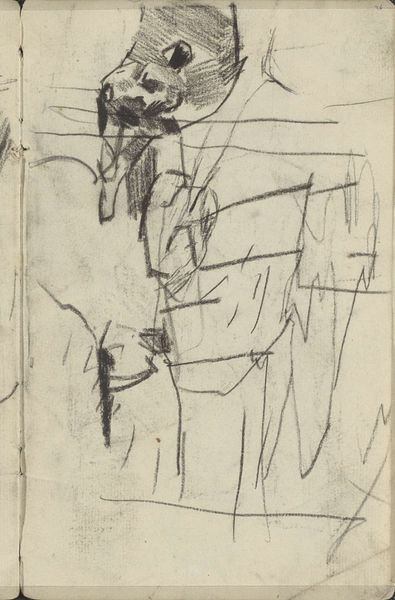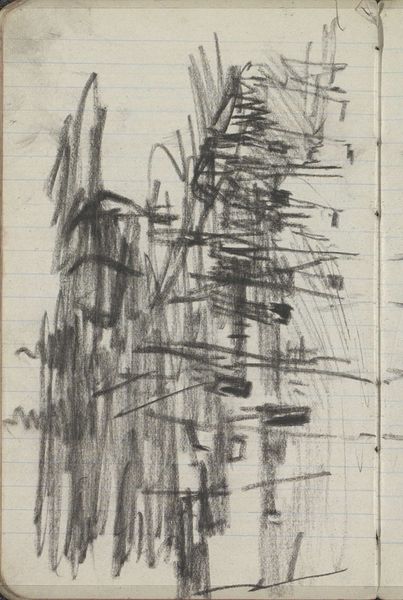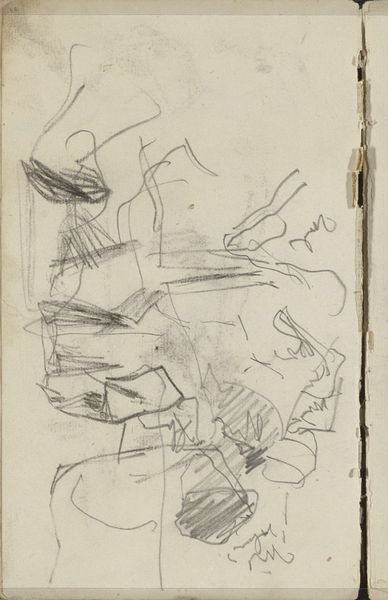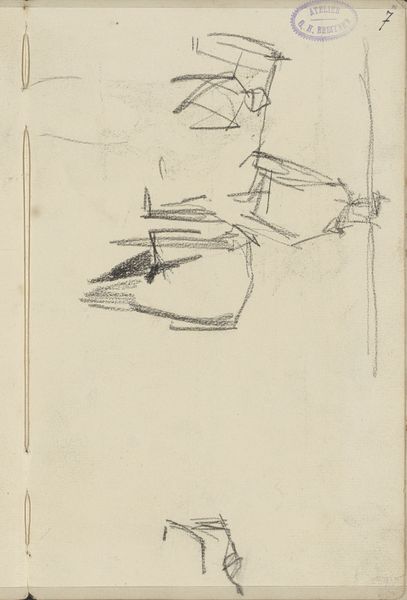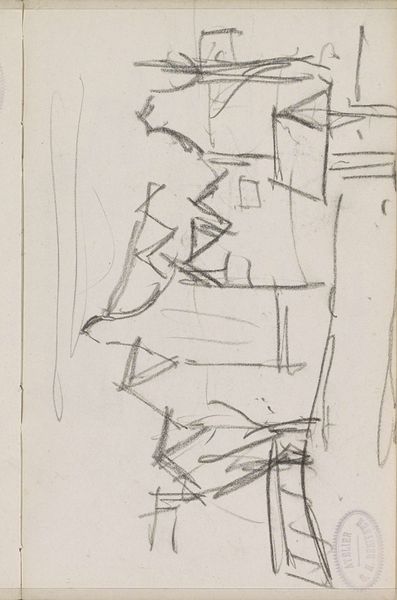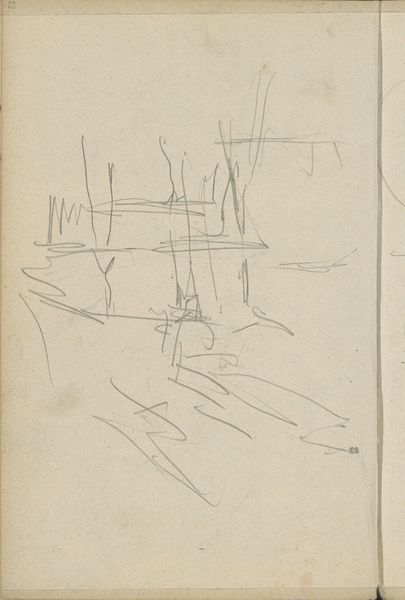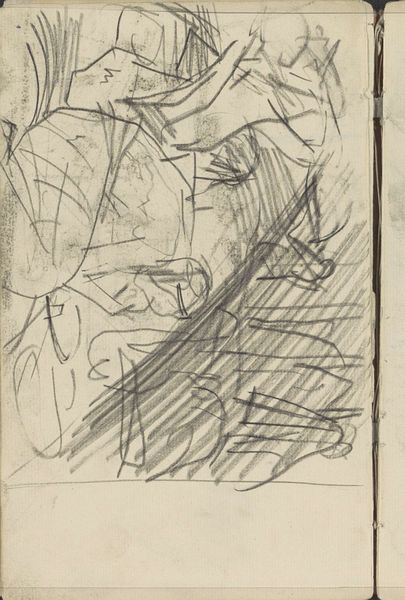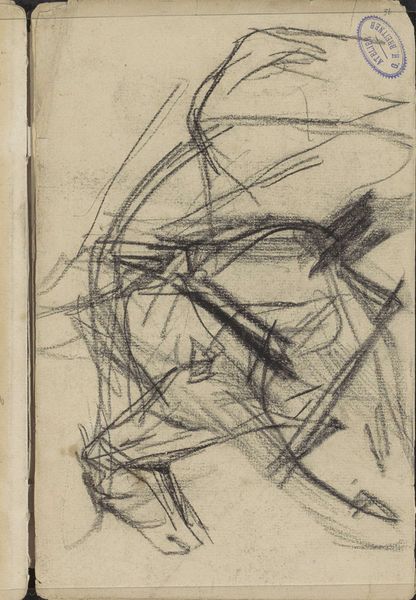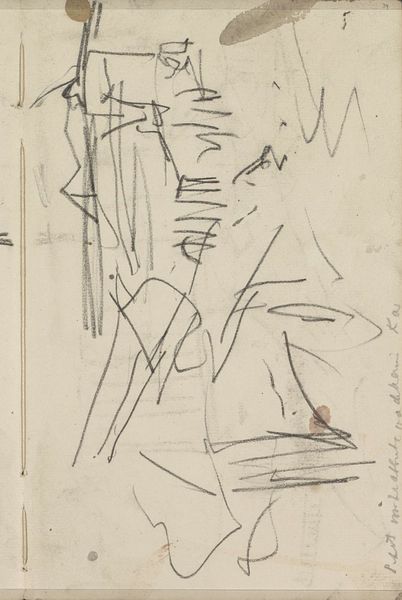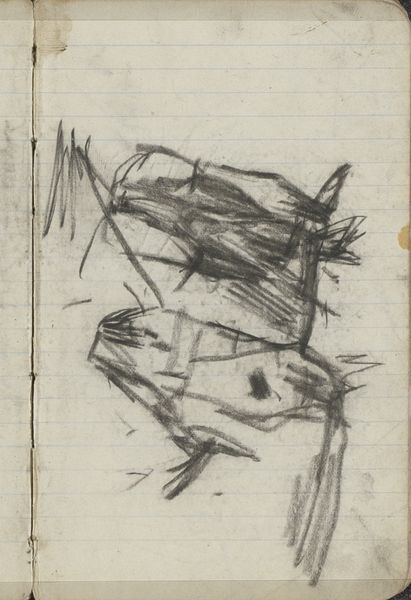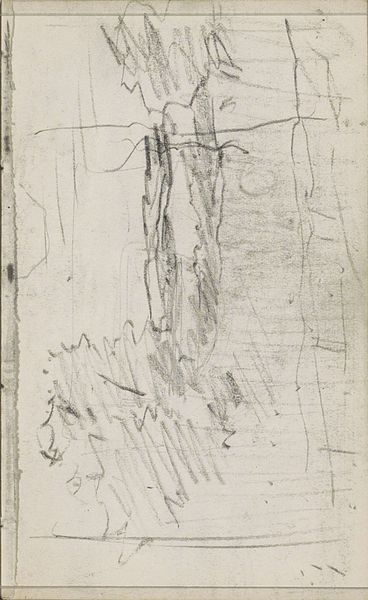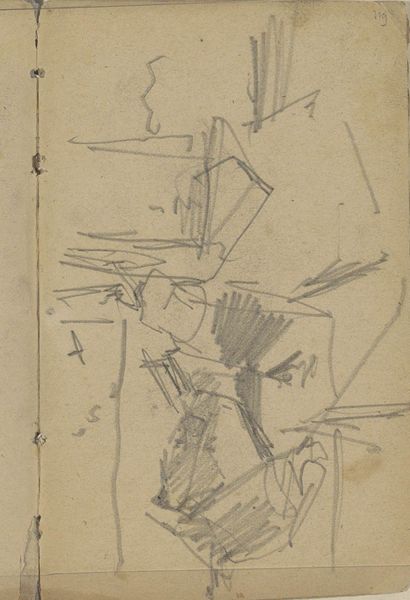
Copyright: Rijks Museum: Open Domain
Curator: George Hendrik Breitner sketched "Gezicht in Amsterdam," or "View of Amsterdam," around 1903, rendered simply in pencil. It resides today in the Rijksmuseum. Editor: It's so fleeting, isn't it? Like a half-remembered dream of a street scene. Sparse, almost aggressively unrefined... it feels less about representation and more about capturing an ephemeral moment. Curator: Indeed. Breitner was fascinated by the urban landscape and working-class life in Amsterdam. Consider the material conditions—his sketchbooks, readily available and portable, facilitated a constant recording of the city's pulse. This rejects the highly crafted art of the academy for direct observation. Editor: That access to art making certainly reflects broader social shifts, especially at a time when rapid industrialization and urbanization impacted working-class populations. The street view presented in his sketch also calls forth a question, who can observe a scene like that, and how do structures of power frame how and why they choose what to draw, paint, sculpt or write about it? Curator: Well, the sketch, created with readily available pencil on paper, reflects Breitner’s embrace of everyday materials, signaling a democratization of art-making. These sketches weren't intended as finished works. They were preparatory—tools for his larger, more polished paintings and photographs. Editor: The choice of medium itself speaks volumes about accessibility. Cheap and portable, perfect for jotting down impressions on the go and thus creating social commentary. Curator: Precisely. And by focusing on the materiality and accessibility of the artmaking process, we confront traditional art historical narratives that prioritize the exceptional genius. It’s not necessarily about skill here, it’s about observing and documenting within very specific circumstances of a place, a time, and a sociopolitical setting. Editor: So we begin with questioning. And in the questioning comes reflection on the power relations embedded within how art is constructed, received and remembered, so that we create an inclusive, accessible view of history. Curator: That's one way of viewing it. It offers, regardless of intent, glimpses into a rapidly transforming society and invites us to question the labor, the capital and technology that allow a society to observe itself. Editor: Food for thought, to be sure, about art, labor, and society.
Comments
No comments
Be the first to comment and join the conversation on the ultimate creative platform.

